Do you have a question about the Vertiv EXM 0100kTK16FN01000 and is the answer not in the manual?
Safety precautions for personnel handling the UPS, emphasizing professional installation and proper handling.
Safety guidelines for the UPS, including storage environment and operating conditions.
Details the compliance of the UPS with various international safety and EMC standards.
Covers battery management functions, including charging, EOD protection, and pre-warning.
Outlines battery protection features such as low pre-warning, EOD protection, and BCB alarm.
Provides essential precautions for mechanical installation, including safety and site considerations.
Covers the procedures and methods for wiring the UPS power cables.
Details the importance and procedure for establishing a reliable protection ground connection.
Explains the necessity and selection of external protective devices for safety.
Provides step-by-step instructions for connecting power cables to the UPS.
Covers the procedures and methods for wiring the UPS signal cables.
Provides step-by-step instructions for connecting signal cables, including routing.
Describes the UPS functions controllable by an operator, such as silencing alarms and inverter control.
Guides on how to view the UPS status through graphic and text displays.
Provides a comprehensive list of UPS alarms and their explanations.
Highlights important safety precautions and warnings for UPS operation.
Identifies and describes the function of the UPS power switches (Q1, Q2, Q3, Q5).
Details the procedures for starting up the UPS from a powered-down state.
Step-by-step guide for starting the UPS in normal operating mode.
Instructions for starting the UPS in Energy Saving (ECO) mode.
Guides on starting the UPS using battery power (cold start).
Details the battery self-test functions, including periodical and manual tests.
Outlines the procedures for safely shutting down the UPS system.
Step-by-step guide for completely powering down the UPS.
Procedure to power down the UPS while keeping power supply to the load.
Explains the Emergency Power Off (EPO) function for emergency shutdown.
Details the procedures to reset the UPS after an EPO event or fault.
Crucial safety precautions for working with high-voltage battery systems.
Details about the valve-regulated UPS batteries, their characteristics, and maintenance.
Important considerations for the design phase of battery installation.
Outlines essential battery protection measures, including overcurrent and short-circuit protection.
Provides detailed procedures for battery installation and connection.
Step-by-step guide for installing the UPS batteries.
Details how to connect the batteries, including series and parallel configurations.
Introduces the optional Battery Circuit Breaker (BCB) box and its safety necessity.
Describes the optional battery ground fault detector for reliable system operation.
Covers essential battery maintenance procedures and precautions.
Details the installation procedures specific to parallel UPS systems.
Provides guidelines for the physical installation and interconnection of parallel UPS cabinets.
Emphasizes the critical role of external protective devices for safety in parallel systems.
Covers power cable wiring requirements for parallel and dual-bus systems.
Details the connection of parallel cables to ensure reliable control of the parallel system.
Details the operational procedures for parallel UPS systems.
Step-by-step guide for starting parallel UPS modules in normal mode.
Outlines procedures for performing maintenance using the bypass function.
Guides on safely isolating a single UPS module from a parallel system for repair.
Details on reintegrating an isolated UPS module back into a parallel system.
Provides steps for completely shutting down UPS modules in a parallel system.
Explains how to shut down UPS modules while maintaining power to the load.
Details the cabinet installation for LBS systems, including synchronization cables.
Refers to external protective devices as required for LBS system installation.
Highlights critical safety precautions for UPS inspection and maintenance.
Provides service procedures for the UPS power and bypass modules.
| Model | EXM 0100kTK16FN01000 |
|---|---|
| Category | UPS |
| Power Rating | 100 kVA |
| Phase | 3-Phase |
| Frequency | 50/60 Hz |
| Topology | Double Conversion Online |
| Efficiency | Up to 96% |
| Operating Temperature | 0 to 40 °C |
| Input Voltage | 380/400/415V |
| Output Voltage | 380/400/415V |
| Battery Type | Valve Regulated Lead Acid (VRLA) |
| Management Interface | SNMP, Modbus |
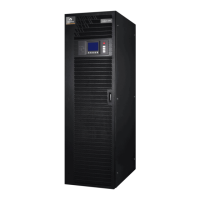
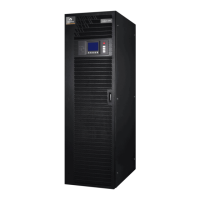

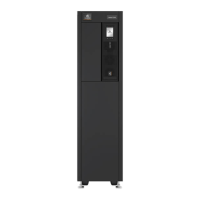

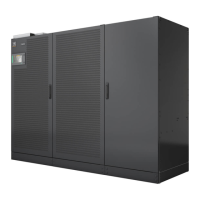

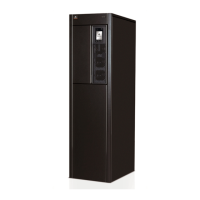

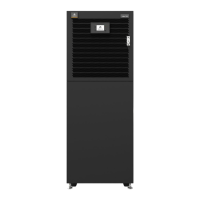


